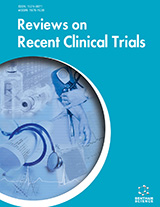Abstract
Despite relative stable and adequately controlled background pain, Breakthrough Cancer Pain (BTcP) is a transient exarcebation of pain that occurs either spontaneously or in relation to a specific predictable trigger. It is characterized by a typical temporal pattern which includes a short onset (generally a few minutes) and a short duration (30-90 minutes). It has a strong influence on quality of life (QoL), including detrimental effects on activities of daily living, sleep, social relationships and enjoyment of life. Therefore, BTcP represents an important clinical challenge in the care of patients with cancer. Transmucosal fentanyl, a rapid onset opioid (ROO), is indicated for the treatment of BTcP in patients who are already receiving and are tolerant to opioid therapy for underlying, persistent pain. In order to identify published studies on BTcP and ROOs a Medline search was carried out. The characteristics of the various formulations of transmucosal fentanyl used for BTcP and clinical data published in literature will be described in this review.
Keywords: Breakthrough cancer pain, fentanyl, transmucosal delivery, rapid onset opioid, hydromorphon, subcutaneous route, transmucosal, bioavailability, morphine, nasal
Reviews on Recent Clinical Trials
Title:Fentanyl for Breakthrough Cancer Pain: Where are We?
Volume: 8 Issue: 1
Author(s): Fausto Meriggi and Alberto Zaniboni
Affiliation:
Keywords: Breakthrough cancer pain, fentanyl, transmucosal delivery, rapid onset opioid, hydromorphon, subcutaneous route, transmucosal, bioavailability, morphine, nasal
Abstract: Despite relative stable and adequately controlled background pain, Breakthrough Cancer Pain (BTcP) is a transient exarcebation of pain that occurs either spontaneously or in relation to a specific predictable trigger. It is characterized by a typical temporal pattern which includes a short onset (generally a few minutes) and a short duration (30-90 minutes). It has a strong influence on quality of life (QoL), including detrimental effects on activities of daily living, sleep, social relationships and enjoyment of life. Therefore, BTcP represents an important clinical challenge in the care of patients with cancer. Transmucosal fentanyl, a rapid onset opioid (ROO), is indicated for the treatment of BTcP in patients who are already receiving and are tolerant to opioid therapy for underlying, persistent pain. In order to identify published studies on BTcP and ROOs a Medline search was carried out. The characteristics of the various formulations of transmucosal fentanyl used for BTcP and clinical data published in literature will be described in this review.
Export Options
About this article
Cite this article as:
Meriggi Fausto and Zaniboni Alberto, Fentanyl for Breakthrough Cancer Pain: Where are We?, Reviews on Recent Clinical Trials 2013; 8 (1) . https://dx.doi.org/10.2174/15748871112079990039
| DOI https://dx.doi.org/10.2174/15748871112079990039 |
Print ISSN 1574-8871 |
| Publisher Name Bentham Science Publisher |
Online ISSN 1876-1038 |
 35
35
- Author Guidelines
- Bentham Author Support Services (BASS)
- Graphical Abstracts
- Fabricating and Stating False Information
- Research Misconduct
- Post Publication Discussions and Corrections
- Publishing Ethics and Rectitude
- Increase Visibility of Your Article
- Archiving Policies
- Peer Review Workflow
- Order Your Article Before Print
- Promote Your Article
- Manuscript Transfer Facility
- Editorial Policies
- Allegations from Whistleblowers
Related Articles
-
Drug Design Studies of the Novel Antitumor Targets Carbonic Anhydrase IX and XII
Current Medicinal Chemistry Bugs as Drugs: Understanding the Linkage between Gut Microbiota and Cancer Treatment
Current Drug Targets Control of Neuropathic Pain by Immune Cells and Opioids
CNS & Neurological Disorders - Drug Targets An Update on Overcoming MDR1-Mediated Multidrug Resistance in Cancer Chemotherapy
Current Pharmaceutical Design Exploring Mechanisms of MicroRNA Downregulation in Cancer
MicroRNA Aquaporin Biology and Nervous System
Current Neuropharmacology Involvement of Leukotriene Pathway in the Pathogenesis of Ischemia- Reperfusion Injury and Septic and Non-Septic Shock
Current Vascular Pharmacology Are Selenoproteins Important for the Cancer Protective Effects of Selenium?
Current Nutrition & Food Science Expression, Regulation, and Role of an Oligopeptide Transporter: PEPT1 in Tumors
Current Medicinal Chemistry Applications of Nanomaterials for Cancer Treatment: Recent Patents Review
Recent Patents on Nanomedicine Monoclonal Antibodies in the Treatment of Hematologic Malignancies: Radiation Dosimetry Aspects
Current Pharmaceutical Biotechnology 99mTc-labeling of Peptidomimetic Antagonist to Selectively Target αvβ3 Receptor-Positive Tumor: Comparison of PDA and EDDA as Co-Ligands
Current Radiopharmaceuticals Carbohydrate-Metal Complexes and their Potential as Anticancer Agents
Current Medicinal Chemistry Cyclodextrins and their Derivatives as Carrier Molecules in Drug and Gene Delivery Systems
Current Organic Chemistry Meet Our Editorial Board Member
Current Drug Therapy Current Drug Therapy for Prostate Cancer: An Overview
Current Medicinal Chemistry - Anti-Cancer Agents Reposition of the Fungicide Ciclopirox for Cancer Treatment
Recent Patents on Anti-Cancer Drug Discovery The Potential for Targeting Oncogenic WNT/β -Catenin Signaling in Therapy
Current Drug Targets MicroRNA-34 Family, Mechanisms of Action in Cancer: A Review
Current Cancer Drug Targets Bladder Injury During Cesarean Delivery
Current Women`s Health Reviews


























